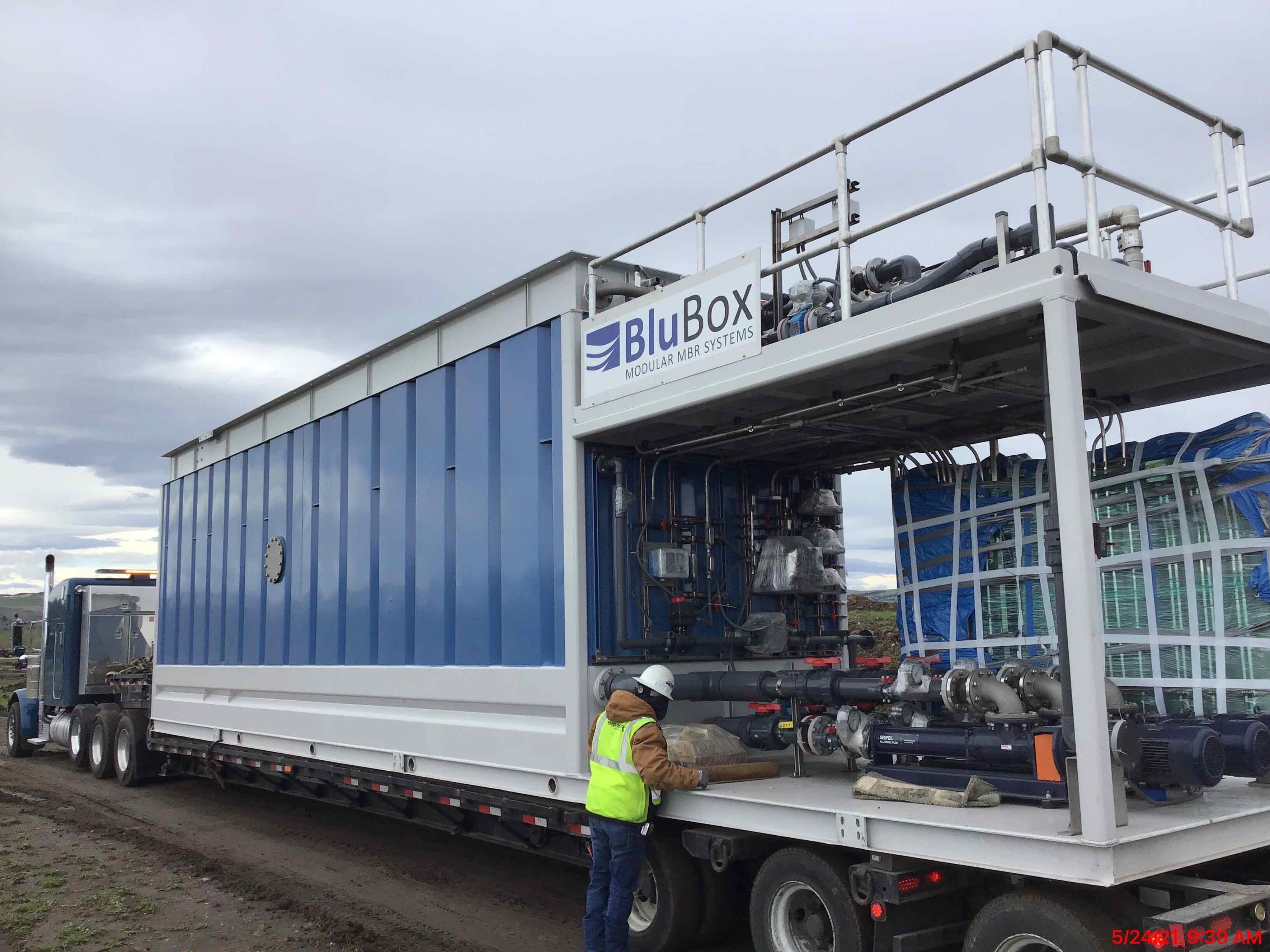Harnessing Hydraulic Retention Time for Greater Wastewater Treatment Efficiency

Imagine a bustling coastal town that experiences a population surge each summer–and thus an increase in wastewater volume. To manage this, the town’s municipal wastewater treatment plant focuses on adjusting the Hydraulic Retention Time (HRT), a critical factor in wastewater treatment systems, in its membrane bioreactor (MBR) system throughout the year.
HRT is the key to the municipal wastewater plant’s efficiency in the face of variable loads.
In summer, the HRT is shortened to handle the high flow efficiently, maintaining treatment quality without overburdening the system. In winter, the HRT is lengthened to allow more thorough pollutant degradation, optimizing the microbial community’s stability.
This flexible approach enables the plant to meet environmental standards throughout the year while optimizing operational costs and energy usage.
HRT is one of the cardinal parameters in the design and operation of wastewater treatment facilities. It represents the average time a volume of wastewater spends in the treatment process (the volume of a reactor divided by the influent flow rate of water, which affects the average amount of time wastewater stays in the reactor, entering the reactor).
Managing HRT effectively is important for the success of wastewater treatment operations, particularly in MBRs. Understanding this retention time is essential for ensuring that the biological and chemical processes within the treatment system have sufficient time to effectively treat the wastewater.
This article will explain the fundamentals of HRT, its importance in wastewater treatment, and the implications of optimizing this metric.
The Significance of HRT in Wastewater Treatment
The measure of HRT from one day to the next has a direct impact on the actual efficiency of biological processes used in wastewater management.
For example, adequate HRT ensures that microorganisms have the proper amount of time to digest organic pollutants such as soluble compounds. In MBR systems, where biological degradation is a primary method for reducing organic load, the timing involved in this digestion is key.
Microorganisms require sufficient time to assimilate and then metabolize the organic substances in wastewater. If the HRT is too short, these microorganisms do not have the necessary time to treat the wastewater effectively, leading to incomplete degradation of organics and potentially higher levels of Biological Oxygen Demand (BOD) and Chemical Oxygen Demand (COD) in the effluent. Your team must avoid that outcome.
A well adjusted HRT in an MBR system ensures that biological degradation is not rushed. Proper HRT allows for the complete assimilation of organic material by microbial populations–which is important in high-load or variable-load scenarios.
Further, processes such as nitrification and denitrification, essential for phosphorous removal, are themselves time-sensitive. Adequate HRT is the through-line to getting those processes to happen on time; HRT is essential to navigate those processes alongside the growth and activity of specific bacterial populations.
It’s a balancing act, but there are times when more time in the treatment process is helpful.
Longer HRT can improve the settling of solids and the clarity of the treated effluent. This is because it provides more time for particles to coalesce and settle out of the water column.
In the context of MBRs, while the membranes do an excellent job of physical separation, ensuring a longer HRT can reduce the overall solid load on the membranes, thereby enhancing the system’s efficiency and reducing the frequency of membrane fouling due to high current density and excessive organic load. This extended retention time allows more complete biological flocculation processes, whereby fine particulate matter aggregates into larger flocs that are more easily separated by the membranes.
Longer HRTs also allow for the natural degradation of finer particulates that might otherwise pass through or clog the membrane pores. As these particles have more time to coalesce into settleable flocs, the overall clarity of the output water is improved, making it suitable for discharge or further treatment steps, such as disinfection and reuse.
Optimizing HRT in MBR Systems
So, what are some levers that a plant operator or process engineer can pull to dial in HRT?
Optimizing HRT in an MBR system means adjusting the retention time to the ideal point where maximum treatment efficiency is achieved without incurring unnecessary operational costs or system stresses. This optimization requires a deep understanding of the biological processes at work, such as anaerobic digestion and activated sludge dynamics, and the interactions between various operational parameters.
Advanced sensors and automated control systems play a critical role in optimizing HRT. These technologies monitor real-time data on influent quality and effluent standards, such as COD removal efficiency and phosphorus content, allowing for dynamic adjustments to HRT based on fluctuating wastewater characteristics and treatment needs.
Simulation models and pilot testing are often used to determine the optimal HRT for specific wastewater types and treatment goals. These tools help predict how changes in HRT will affect the overall treatment process and effluent quality.
Continuous feedback from effluent quality measurements can inform adjustments to HRT, ensuring that the system responds effectively to any changes in influent load or composition.
Advantages by Design in MBR Systems
The day-to-day efforts to dial in HRT will pay off. By optimizing this measure, MBR systems can achieve higher removal efficiencies for organic matter, nutrients, and emerging contaminants. In fact, MBRs are uniquely designed to allow greater control over HRT for plant operators.
Imagine the storms of late summer or the rapid snowmelt of early spring. MBR systems are particularly adept at handling variable flow rates and loads, which can be managed by adjusting HRT.
When inflow increases, reducing the HRT can help accommodate the higher volumes of wastewater without requiring significant physical expansion of the facility, such as adding additional aeration tanks or batch reactors. Conversely, during periods of low flow, increasing the HRT can ensure that the reduced volume still receives adequate treatment time for effective contaminant removal.
One of the other distinct advantages of MBR technology is the decoupling of HRT from Solids Retention Time (SRT), which works in tandem with different hydraulic retention times. This feature allows the system to retain a high biomass concentration even when the hydraulic load varies, thereby maintaining removal efficiencies without the need for large basins or extended treatment times typically required in conventional systems.
Proper HRT helps in managing the concentration of solids in the bioreactor, thereby reducing the risk of membrane fouling due to high current density and improving biomass retention–a very important element of maintaining the efficiency and longevity of membrane components.
Practical Considerations and Challenges
Implementing the ideal HRT in an MBR system involves several practical considerations. For one, the physical design of the treatment plant, including reactor dimensions and configuration, directly influences the achievable HRT. Systems must be designed with flexibility to adjust HRT according to changing treatment demands.
Advanced control systems are needed to dynamically adjust HRT in response to real-time data on inflow quality and quantity. This requires sophisticated sensors and control algorithms to maintain optimal conditions, like consistent biogas production and efficient methane capture, within the reactor.
Regular maintenance and monitoring are essential to ensure that the system operates at the designed HRT. This includes routine checks of flow meters, valves, and other equipment that control the hydraulic profile of the plant.
Conclusion
HRT is a fundamental aspect of wastewater treatment that influences the efficiency and effectiveness of biological processes, especially in advanced systems like MBRs.
Understanding and optimizing HRT can lead to significant improvements in treatment performance, compliance with discharge regulations, and overall operational efficiency. As wastewater treatment technologies evolve, the ability to precisely control and adjust HRT will play an increasingly important role in meeting the challenges of modern wastewater management.
Want to learn more? Read some of our similar articles:
Sign up for the Integrated Water Services newsletter.
We share important perspectives and news on MBR wastewater treatment every two weeks.


